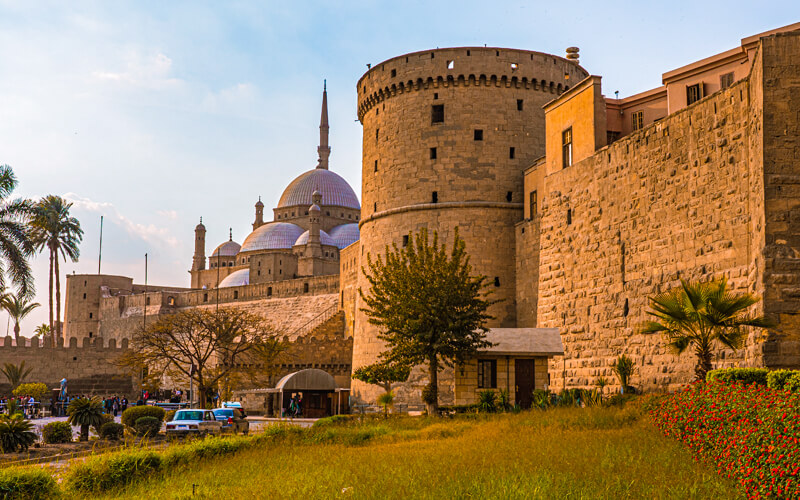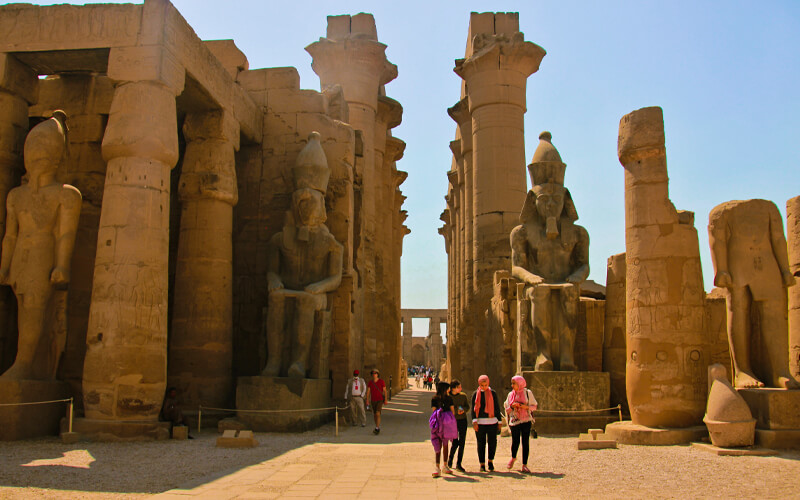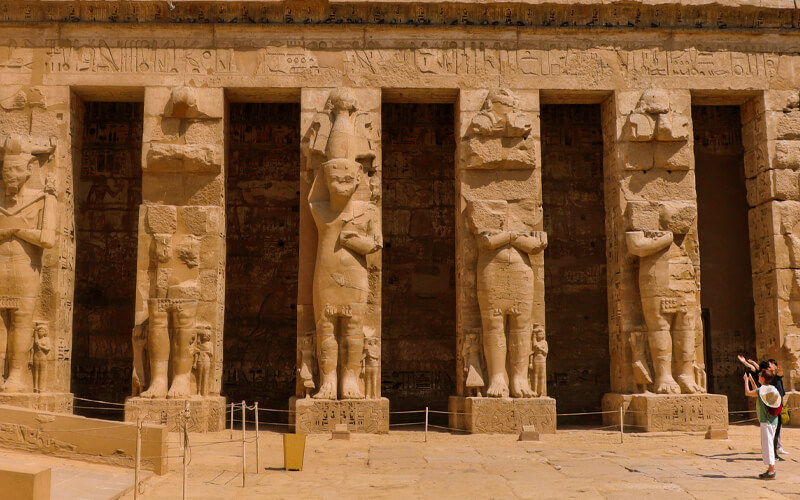Saladin Citadel
Saladin’s Citadel is a fortress in the city of Saladin.
Saladin Al-Ayouby erected the Saladin Citadel at the end of the 12th century, and it is now known as the Saladin Fortress. He was formerly a well-known monarch and army commander, and he was also the founder of the Ayyubid Dynasty, which flourished throughout the Middle Ages. Throughout Egyptian history, The Citadel has been witness to several significant historical events.
For many centuries, it served as the official residence of the Egyptian monarch and his administration. Several dynasties ruled over Egypt from the citadel, including the Ayyubids, the Mamluks, and even certain Ottomans, at various times.
Throughout Egypt’s history, the citadel has always played an important part in the country’s politics, regardless of the stage of the country’s development. It has happened on occasion that one Sultan or ruler might have power over Cairo while another Sultan or ruler held control over the citadel. The Citadel has successfully defended Egypt against several violent assaults throughout history.
Several significant monuments were erected at the Citadel of Saladin during the fortress’s lengthy existence. In addition, the magnificent Mosque of Mohamed Ali, which is unquestionably the outstanding specimen of Ottoman architecture in Egypt, is included. There is also the Mamluk Mosque of El Nasser Mohamed, as well as the modest and lovely Mosque of Suleiman Pasha El Khadim, which are both located nearby.
Today, the Citadel of Saladin is one of the most visited historical monuments in Cairo, and it is included in almost every tour of the city.
Other than mosques, the citadel is home to four other noteworthy museums: the Military Museum, the Police Museum, the Royal Carriages Museum, and the Qasr El Gawhara Museum, all of which are located inside its walls.
Being perched high above Cairo’s busy cityscape, the citadel offers visitors spectacular views of the cityscape and the surrounding countryside.
The Motives for the Construction of the Citadel and the Location of the Citadel
When Saladin seized control of Egypt, even though the Fatimids (who ruled Egypt from the 8th to the 12th centuries) offered no resistance, he decreed that Cairo be fortified to protect the city from future foreign attacks. The Citadel of Cairo was completed in 1187 and served as a fortified citadel until the Ottoman Empire conquered Egypt in 1517. In particular, this was critical during the danger posed by the Crusaders, who were waging military operations in the Middle East during this time frame.
Given how fortified and defensive the citadels of Syria and Lebanon were, Saladin found a great deal of inspiration in these structures. Recognizing the need of building such a vast citadel to secure Cairo, he committed all of his resources to the construction of the military complex in question.
Saladin chose the site of his citadel over Mokattam Hill after considering several different options in and around Cairo. By constructing his citadel over Mokattam Hill, Saladin would be able to see the entire city of Cairo and would be in a strategic position that would give the occupants a significant advantage in an attack.
The Construction of the Building’s History
The construction of the Citadel started in 1176, during Saladin’s time as Sultan of Egypt. However, it was not finished until 1182, under the reign of Al Malek El Kamel, that it was considered complete. After Saladin’s death, Al Malek el Kamel ruled Egypt and was the first monarch to reside in the Citadel of Alexandria.
Saladin believed that a heavily fortified citadel was required to safeguard the city of Cairo from all possible dangers. Several lesser pyramids in Giza were claimed to have been demolished by him so that he could use their stones to construct his castle and its fortifications. A large number of Saladin’s men, as well as those crusaders who had been captured by Saladin, collaborated in the construction of the citadel’s walls. At the time of its construction, it was hailed as a “contemporary masterpiece of military architecture.”
Saladin also excavated water well within the castle, which would be utilized by the troops if the citadel was ever besieged by the enemy. In the 12th century, this well was believed to be one of the most challenging structures ever built, and it is still considered such now. It was 90 meters deep and a remarkable marvel, excavated deep into the toughest rocks of the Mokattam Mountain, and it was a wonderful wonder to see.
The Citadel of Saladin in Cairo, Egypt, is widely regarded as one of the most exquisite strongholds ever built during the Middle Ages. Its strategic position, which afforded it a bird’s eye view over the two nearest towns at the time, Fustat and Cairo, made it particularly attractive.
Furthermore, since it was strategically located between the two towns, the Citadel of Saladin served as an excellent refuge if Cairo was captured. It was the epitome of a fortress in every way.
The Constable was there during historical events.
The Ayyubid and Mamluk periods in Egypt’s history were marked by several significant events that took place in the Citadel of Saladin, which is located in Cairo. Even during the French invasion of Egypt in 1798, under the command of Napoleon Bonaparte, the citadel played an essential role in protecting the city, until the French forces assaulted the citadel’s walls and took control of the fortification.
Egyptian ruler Mohamed Ali was appointed by the Ottoman Sultan in Istanbul to manage the country’s administration. Even though he had his aspirations, including the establishment of Egypt as an independent state by breaking away from the Ottoman Empire, which had been lording over Egypt from the citadel since the 19th century.
Saladin’s Citadel (also known as Saladin’s Citadel 3)
According to legend, it was in the Qaser El Gawhara, also known as the Palace of the Jewel, which is located within the Citadel of Saladin (which has since been transformed into a museum), that Mohamed Ali invited the Mamluk leaders and brutally murdered them in the famous political event that became famous afterward as the “Massacre of the Citadel.”
Saladin’s Citadel’s Gates are a sight to see.
Gate of El Mokatam
The gate was given the name El Mokatam Gate since it was built close to the Mokattam monitoring tower of the citadel, which is whence it got its name. This gate, which was built during the Ottoman era and is now known as the Salah Salem Gate, takes its name from the street on which it is now situated.
The Gate of Mokattam was built behind a strong wall of hard rocks to the south of the Tower of Mokattam, and it served as a gateway to the city. During the rule of Mohamed Yakan Pasha, a wall with multiple balconies was built around the entrance, and he also built himself a palace next to the gate, which was completed in 1785. Unfortunately, history had taken its toll on the palace, and it was reduced to ruins.
The Citadel of Saladin underwent extensive repair and rebuilding when Mohamed Ali became Egypt’s ruler. He built a road between Bab El Mokatam in the citadel and the road lying below it, which was 650 meters in length when he assumed control of the country.
The Gate of El Mokatam was damaged by the passage of time, and a considerable amount of the walls around it were destroyed when the Egyptian government built the Salah Salem Road in 1955, at which point a new entrance was made, which is still used today to welcome visitors to the citadel.
Bab Ed Haddad, also known as the Iron Gate
The construction of the Iron Gate began in 1822 with Mohamed Ali. Because it permitted heavier guns and equipment to access the citadel, it was intended to be the primary entrance of Saladin’s Citadel. As part of his work on this gate, Mohamed Ali built a road linking it to the rest of Cairo, which became known as the Street of Bab El Hadeed.
The Iron Gate has two main facades: the northern façade, which overlooks Bab El Hadeed Street near Dar El Mahfuzat, and the Old Building of Archives, which was once connected to the Citadel and is now about 15 meters long and 18 meters high. The northern façade is about 15 meters long and 18 meters high, and the southern façade is about 15 meters long and 18 meters high.
The northern façade of the Iron Gate of the Citadel of Saladin features some genuinely extraordinary architectural aspects, such as a memorial plate that gives information on the gate’s construction and the gate’s building history.
The Middle Gate is located in the center of the city.
Historical scholars have debated the origin of the name of this gate for a long time. It is said by some that it was dubbed the Center Gate because it was placed in the middle of two administrative buildings that belonged to two Sultans: Sultan El Ghoury at the time of its construction and Sultan Qalauan later on.
Various other hypotheses
It’s possible that it was named the Middle Gate simply because it was situated between the two other important gates of the citadel, the Iron Gate and the El Mokatam Gate, and as a result, it was dubbed the Middle Gate.
Mohamed Ali repaired this gate, as well as the walls that encircled it, in 1826 as part of his extensive restoration and reconstruction work at the Citadel of Saladin, which included several other structures. Other structures were erected in the Citadel during Mohamed Ali’s reign, the most notable of which is the enormous alabaster Mosque of Mohamed Ali, which is a must-see.
The Citadel of Saladin will always be remembered as one of Cairo’s most famous tourist attractions. Visiting the Mohamed Ali Mosque and the Military Museum, as well as taking in the magnificent architecture of the Citadel and observing Cairo from above, are some of the most intriguing things to do when touring the Egyptian city.
If you want to spend a fantastic vacation check out our amazing Egypt Vacation packages or Cairo Excursions to find the best way to travel to Egypt for you.



